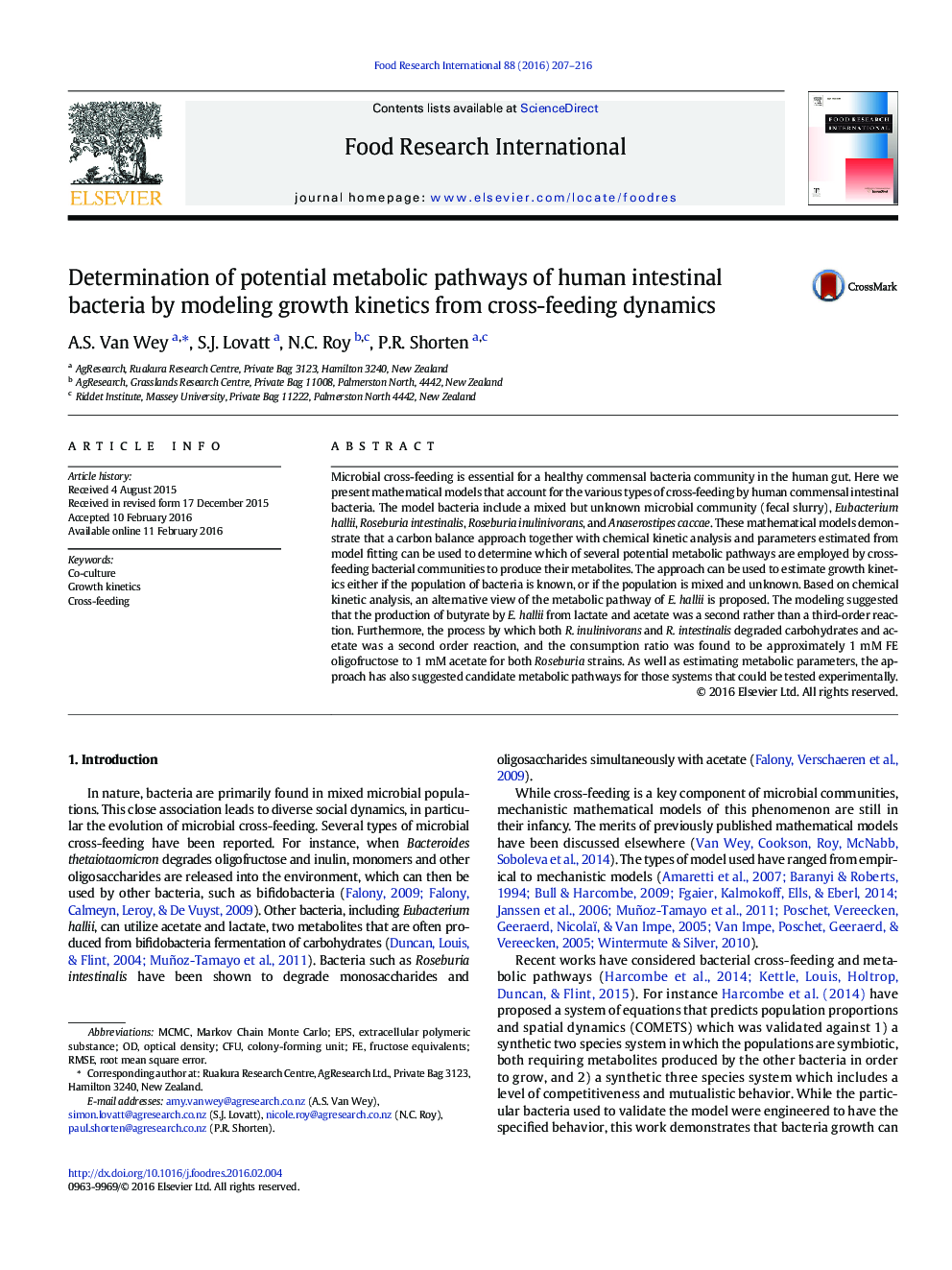| Article ID | Journal | Published Year | Pages | File Type |
|---|---|---|---|---|
| 6394978 | Food Research International | 2016 | 10 Pages |
â¢Presents four mechanistic models to describe various bacterial cross-feedingâ¢Models can estimate growth kinetics of known or unknown bacterial populationsâ¢Suggests candidate metabolic pathways to be testedâ¢Alternative metabolic pathway for Eubacterium hallii is proposed
Microbial cross-feeding is essential for a healthy commensal bacteria community in the human gut. Here we present mathematical models that account for the various types of cross-feeding by human commensal intestinal bacteria. The model bacteria include a mixed but unknown microbial community (fecal slurry), Eubacterium hallii, Roseburia intestinalis, Roseburia inulinivorans, and Anaserostipes caccae. These mathematical models demonstrate that a carbon balance approach together with chemical kinetic analysis and parameters estimated from model fitting can be used to determine which of several potential metabolic pathways are employed by cross-feeding bacterial communities to produce their metabolites. The approach can be used to estimate growth kinetics either if the population of bacteria is known, or if the population is mixed and unknown. Based on chemical kinetic analysis, an alternative view of the metabolic pathway of E. hallii is proposed. The modeling suggested that the production of butyrate by E. hallii from lactate and acetate was a second rather than a third-order reaction. Furthermore, the process by which both R. inulinivorans and R. intestinalis degraded carbohydrates and acetate was a second order reaction, and the consumption ratio was found to be approximately 1Â mM FE oligofructose to 1Â mM acetate for both Roseburia strains. As well as estimating metabolic parameters, the approach has also suggested candidate metabolic pathways for those systems that could be tested experimentally.
